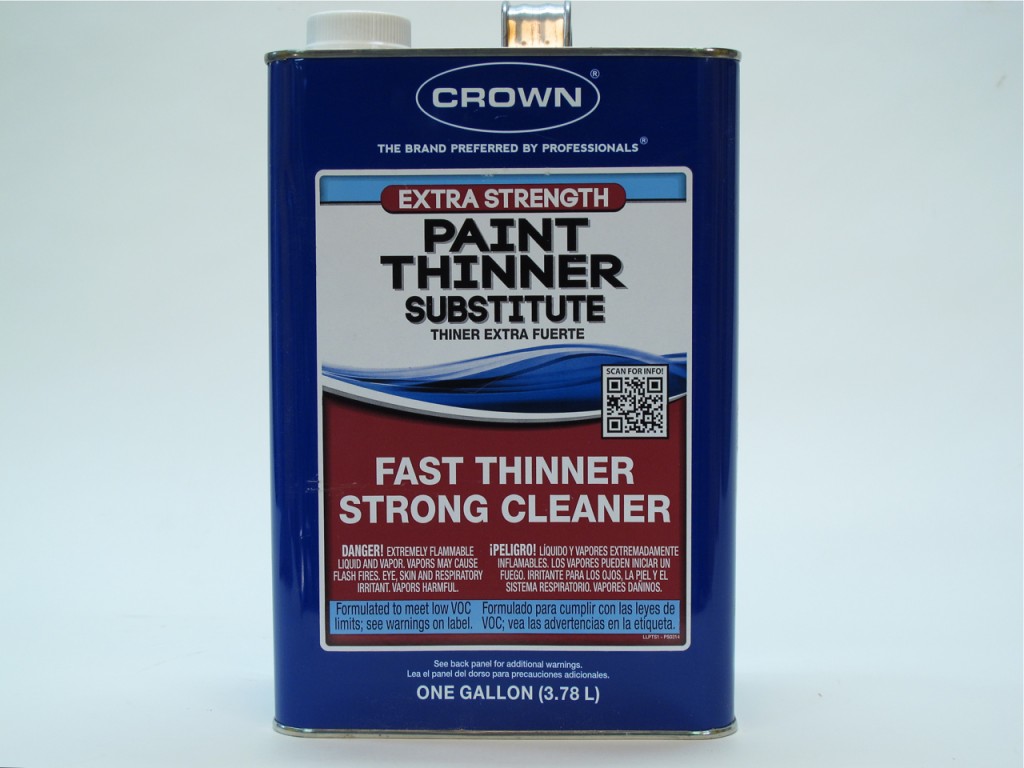We may receive a commission when you use our affiliate links. However, this does not impact our recommendations.
Southern California has the strictest VOC laws in the country. These laws have forced manufacturers to change the ingredients they use in paints and finishes, and even eliminate some – for example, oil paint and varnish. They have also done the same with solvents. For example, you can’t buy naphtha anymore, a solvent I find very useful for cleaning oil and wax from a surface without having to wait 10 or 15 minutes for it to evaporate, as you do with mineral spirits (paint thinner).
Manufacturers like to save on costs, and one way to do it is to shrink the number of SKUs or products they sell. So you may come across some of these VOC-compliant products even if you don’t live in California.
As it happens, I have grandchildren in Los Angeles, so I visit often. For fun, I don’t go to Disneyland; I tour the paint stores to see what has changed. On a recent trip I discovered this can of paint thinner. Notice the listed contents on the back of the can: Acetone, Methyl Acetate and Chlorobenzotrifluorides – no petroleum distillates.
I’m not asking you to become a chemist, but you must know that acetone is a very strong solvent, and it is the primary ingredient in this “paint thinner.” If you were to wipe most finishes, paints and many plastics with either acetone or this product, you would damage the surface and maybe even remove the coating entirely.
The company provides some hints on the front label: “extra strength,” “fast thinner,” “strong cleaner.” But these are qualities an unsuspecting consumer might think are good, and the product is still labeled “paint thinner.” So if you’re not paying close attention, you might cause some damage you wish you hadn’t. Be warned.
Editor’s note – You’ll find all of Bob’s books in our store: “Flexner on Finishing” and “Wood Finishing 101.”
Here are some supplies and tools we find essential in our everyday work around the shop. We may receive a commission from sales referred by our links; however, we have carefully selected these products for their usefulness and quality.












Years ago when wanting to get a great finish I’d pour some paint thinner on my work and use very fine auto body wet-dry sandpaper down to 2000 grit. I’ve not needed to do that for years but if I want to do that now, what lubricant do I use?
A far, far better source of information regarding the constituent chemicals of a product is the MSDS (SDS) for the product. It’s free from the manufacturers and provides not only safety information, but also all the hazardous substances in the product, the percentage range of each hazardous substance and a list of dumb (potentially fun?) things that you shouldn’t do with the product.
For products that have a brand name you can also discover what the actual product is and potentially save huge amounts of money (ex. “Bob’s Furniture Funk Remover” retails for $15qt but upon reading the MSDS you learn it’s actually 100% naphtha you can buy in 5gal buckets for $45 at any electric motor service shop, aircraft service shops and anywhere you find small jet turbine engines where it is often used as a starter for certain turbines).
You can also get it at cigar shops and anywhere else that sells lighter fluid but in smaller containers. Most people don’t really want 5gal buckets of naphtha sitting around anyway. Probably.
Regardless, the moral of the story is that the MSDS should be the first place you look if you’re going to be using a new product for the first time (“new” includes new/improved/upgraded/MORE) and anytime a product changes its label. The new label may simply be marketing, but you won’t know unless you consult the MSDS.
Back in the dark ages (1968 -70) I lived in SoCal and worked for Allied Chemical Corp. located across the street from the Standard Oil refinery. Allied provided them with Sulfuric acid for cracking crude oil into its various components. I worked in solvent packaging. Xylene, methyl alcohol, isopropyle alcohol, acetone, methyl ethyl ketone (MEK), trichloroethylene. Some of these chemical compounds are now illegal to manufacture or distribute in California, since they are distilled from petroleum crude. Since a majority of the chemical companies are based in SoCal, the solvents have disappeared from the market.
Sad, because if these solvents are used properly, they do a great job at what they were developed to do. Some of these new compounds are more dangerous than the original. IMHO, it regulatory insanity being imposed on what was once an open, responsible free market.
Thank you Bob!
Your information is always helpful and informative.
Someone once told me about a “GREAT” adhesive remover, and then he went on to take this product and “remove” some old tape from a computer monitor.
The tape and adhesive was removed, but also the “shiny finish of the bezel on the monitor!
Yes, you already guessed it hi “GREAT” adhesive remover was acetone!
Oh, well, at least it didn’t affect the function of his monitor! ha ha
Bob, do they sell turpentine in CA?